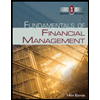Quantitative Problem 1: Hubbard Industries just paid a common dividend, D0, of $2.00. It expects to grow at a constant rate of 2% per year. If investors require a 9% return on equity, what is the current price of Hubbard's common stock? Do not round intermediate calculations. Round your answer to the nearest cent. $ per share Zero Growth Stocks: The constant growth model is sufficiently general to handle the case of a zero growth stock, where the dividend is expected to remain constant over time. In this situation, the equation is: Note that this is the same equation developed in Chapter 5 to value a perpetuity, and it is the same equation used to value a perpetual preferred stock that entitles its owners to regular, fixed dividend payments in perpetuity. The valuation equation is simply the current dividend divided by the required rate of return. Quantitative Problem 2: Carlysle Corporation has perpetual preferred stock outstanding that pays a constant annual dividend of $1.20 at the end of each year. If investors require a 9% return on the preferred stock, what is the price of the firm's perpetual preferred stock? Do not round intermediate calculations. Round your answer to the nearest cent. $ per share Nonconstant Growth Stocks: For many companies, it is not appropriate to assume that dividends will grow at a constant rate. Most firms go through life cycles where they experience different growth rates during different parts of the cycle. For valuing these firms, the generalized valuation and the constant growth equations are combined to arrive at the nonconstant growth valuation equation: Basically, this equation calculates the present value of dividends received during the nonconstant growth period and the present value of the stock's horizon value, which is the value at the horizon date of all dividends expected thereafter. Quantitative Problem 3: Assume today is December 31, 2020. Imagine Works Inc. just paid a dividend of $1.35 per share at the end of 2020. The dividend is expected to grow at 18% per year for 3 years, after which time it is expected to grow at a constant rate of 5% annually. The company's cost of equity (rs) is 9.5%. Using the dividend growth model (allowing for nonconstant growth), what should be the price of the company's stock today (December 31, 2020)? Do not round intermediate calculations. Round your answer to the nearest cent. $ per share
Dividend Valuation
Dividend refers to a reward or cash that a company gives to its shareholders out of the profits. Dividends can be issued in various forms such as cash payment, stocks, or in any other form as per the company norms. It is usually a part of the profit that the company shares with its shareholders.
Dividend Discount Model
Dividend payments are generally paid to investors or shareholders of a company when the company earns profit for the year, thus representing growth. The dividend discount model is an important method used to forecast the price of a company’s stock. It is based on the computation methodology that the present value of all its future dividends is equivalent to the value of the company.
Capital Gains Yield
It may be referred to as the earnings generated on an investment over a particular period of time. It is generally expressed as a percentage and includes some dividends or interest earned by holding a particular security. Cases, where it is higher normally, indicate the higher income and lower risk. It is mostly computed on an annual basis and is different from the total return on investment. In case it becomes too high, indicates that either the stock prices are going down or the company is paying higher dividends.
Stock Valuation
In simple words, stock valuation is a tool to calculate the current price, or value, of a company. It is used to not only calculate the value of the company but help an investor decide if they want to buy, sell or hold a company's stocks.
Quantitative Problem 1: Hubbard Industries just paid a common dividend, D0, of $2.00. It expects to grow at a constant rate of 2% per year. If investors require a 9%
$ per share
Zero Growth Stocks:
The constant growth model is sufficiently general to handle the case of a zero growth stock, where the dividend is expected to remain constant over time. In this situation, the equation is:
Note that this is the same equation developed in Chapter 5 to value a perpetuity, and it is the same equation used to value a perpetual
Quantitative Problem 2: Carlysle Corporation has perpetual preferred stock outstanding that pays a constant annual dividend of $1.20 at the end of each year. If investors require a 9% return on the preferred stock, what is the price of the firm's perpetual preferred stock? Do not round intermediate calculations. Round your answer to the nearest cent.
$ per share
Nonconstant Growth Stocks:
For many companies, it is not appropriate to assume that dividends will grow at a constant rate. Most firms go through life cycles where they experience different growth rates during different parts of the cycle. For valuing these firms, the generalized valuation and the constant growth equations are combined to arrive at the nonconstant growth valuation equation:
Basically, this equation calculates the present value of dividends received during the nonconstant growth period and the present value of the stock's horizon value, which is the value at the horizon date of all dividends expected thereafter.
Quantitative Problem 3: Assume today is December 31, 2020. Imagine Works Inc. just paid a dividend of $1.35 per share at the end of 2020. The dividend is expected to grow at 18% per year for 3 years, after which time it is expected to grow at a constant rate of 5% annually. The company's
$ per share
Trending now
This is a popular solution!
Step by step
Solved in 2 steps with 2 images









